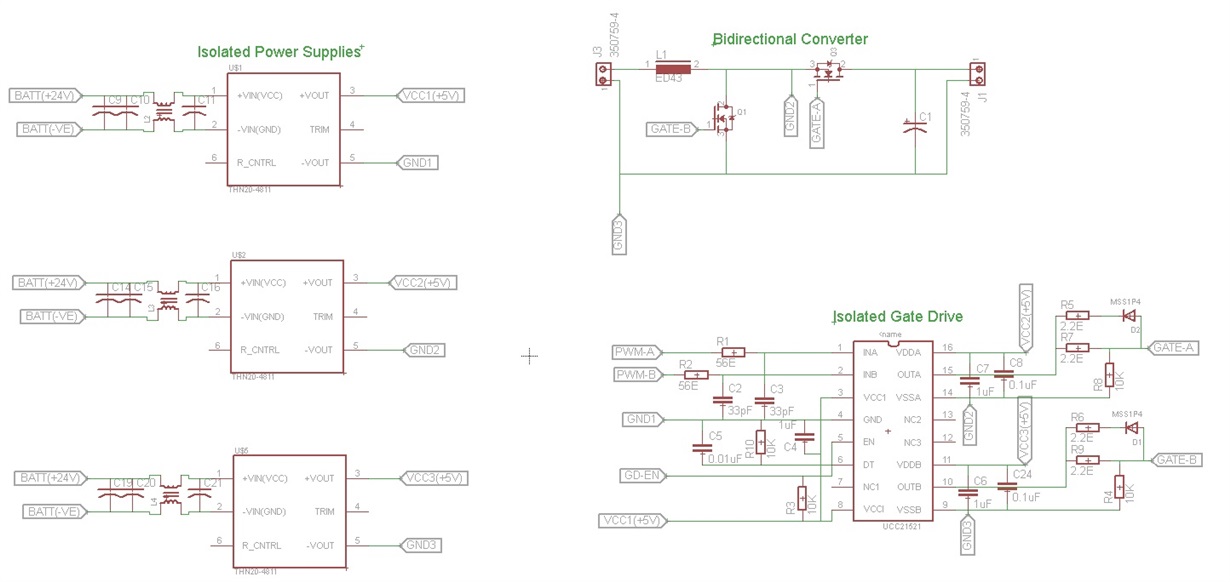Hi,
I am trying to design a bidirectional converter using MOSFET IRL2505. Since, my input (Boost mode) can vary from 8V to 16V, I need to select a MOSFET as well as the gate driver to be compatible with a lower Vgs (5V). I found UCC21521 suitable for this application. I will not use Bootstrap technique here, instead, two isolated power supply is used for high side and low side MOSFET.
Now, I am little confused while determining gate driver's supporting components. I have chosen all the resistor and capacitor value following datasheet of UCC21521 and I have attached the schematic. Can you please check it once and ensure the design. Thanks in advance.


